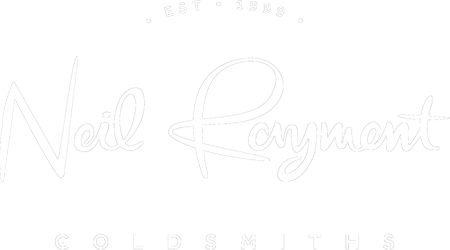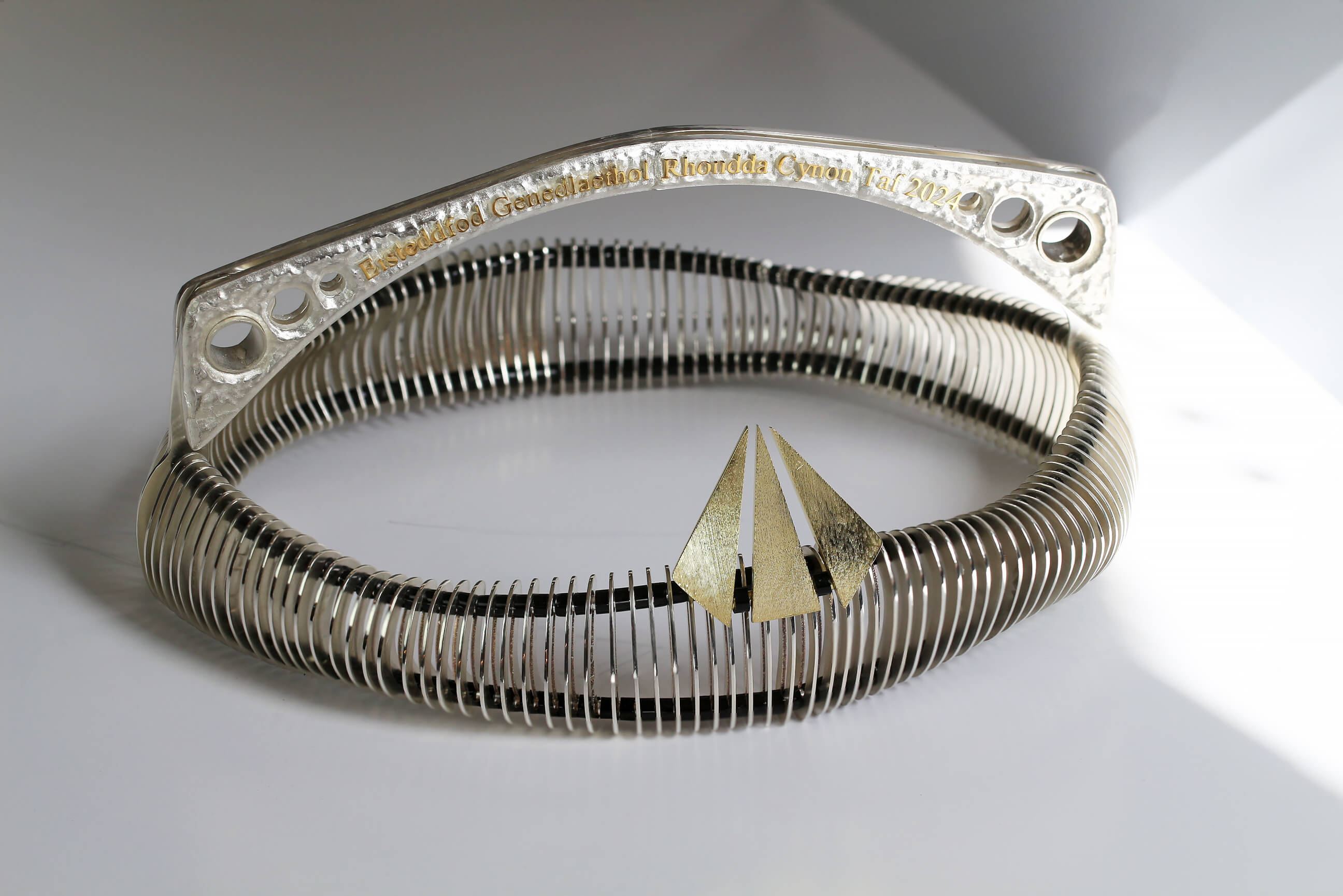
A National Honour
The National Eisteddfod is Wales’s leading festival celebrating language, literature, and the arts. Rooted in over 800 years of tradition, it remains one of the most significant cultural events in the Welsh calendar, attracting more than 150,000 visitors annually. It showcases the very best of Welsh talent and provides a powerful platform for artists, poets, and musicians to share their work and heritage.
Each year, a unique crown is created and awarded to the winning bard—one of the Eisteddfod’s highest honours. Being entrusted with this commission affirmed our commitment to craftsmanship, design, and storytelling through form and material.
“We were inspired not only by Pontypridd’s landscape, but by its history, its music, and its voice. We wanted to create something contemporary yet rooted—something that could stand proudly in the long tradition of Eisteddfod crowns.” - Elan
“To contribute to an 850-year tradition is both humbling and exhilarating. This crown is more than a symbol of poetic achievement—it’s a fusion of design, history, and cultural pride, made to honour the voices of today and tomorrow.” - Neil

Inspiration from the Anthem
During our research, we discovered that ‘Mae Hen Wlad Fy Nhadau’, the Welsh national anthem, was composed in 1856 by father and son James James and Evan James, right here in Pontypridd.
This connection became the heart of our design. The skeletal structure of the crown is built from a repeating 3D pattern inspired by the sound waves of the anthem—a metaphor for the unifying power of music and cultural identity.
We also incorporated a stylised reference to the Pontypridd Bridge—once the longest single-span stone arch bridge in the world—as a symbol of strength, ingenuity, and local pride.
Crafted by Hand
The crown began as a digital model, designed using CAD to map the precise rhythm and form of the anthem’s wave structure. From there, we brought it into the physical world through traditional techniques.
We pierced 160 individual silver pieces to create the flowing wave structure and connected them by hand using silver wire. The Pontypridd Bridge element was then riveted to the crown, completing the architectural and symbolic unity of the piece.

The Crown Revealed
The crown was officially unveiled on 13 June at Llantrisant Hall, in a televised event aired on Heno on S4C. It was then displayed at Pontypridd Library from 17 June until August, allowing the public to experience the design before the ceremony.

Connecting with Future Makers
To extend the educational impact of the project, Elan hosted a special workshop at Ysgol Garth Olwg, the 2024 crown sponsor school. Year 10 Design & Technology students were invited to learn about our process and to create their own interpretations of the crown using paper modelling techniques.
“We extend our heartfelt appreciation to the school for their support—it was a privilege to inspire, and be inspired by, the next generation of Welsh designers and makers.”

Limited-Edition 2024 Jewellery Collection
A Piece of the Crown
To accompany the crown, we produced a limited-edition jewellery collection made using the cut-outs from the crown's creation. Each piece retained the flowing, anthem-inspired forms, offering a rare opportunity to own a wearable piece of the crown’s story.
Available exclusively at the 2024 Eisteddfod in Pontypridd, the collection sold out within days.

Subheading
The Ceremony & The Winning Poet
The highlight of the National Eisteddfod is the Crowning Ceremony, a powerful celebration of poetic achievement and Welsh literary tradition.
At the 2024 ceremony in the Pavilion at Pontypridd, the crown was awarded to Gwynfor Dafydd—a local poet whose work resonated deeply with the judges and the audience.
To see our crown placed on the head of the winning bard—surrounded by music, ceremony, and national pride—was a moment we’ll never forget.
The crown becomes more than an object at that moment—it becomes part of someone’s story, and part of our shared cultural history


